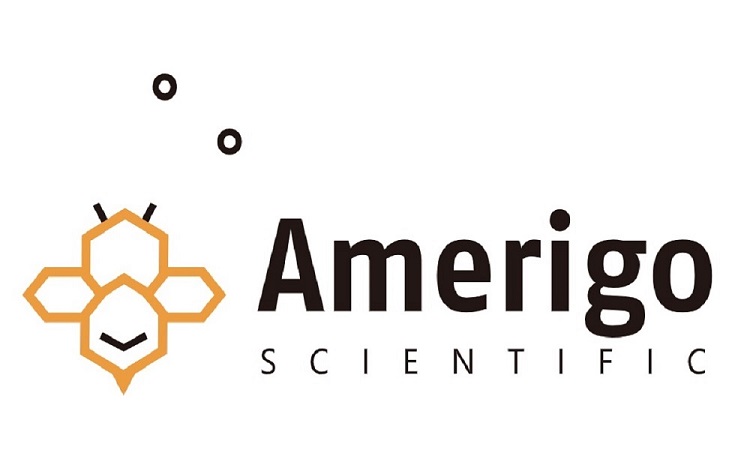Amerigo Scientific
Amerigo Scientific
Amerigo Scientific
Raman and FTIR spectra of 2,4,5- Trifluorobenzonitrile was studied. Highly regioselective substitution reaction of 2,4,5-trifluorobenzonitrile was reported.
More Information
Supplier Page
Amerigo Scientific
2,4,5-Trifluorobenzyl alcohol is an aryl fluorinated building block. It is also referred to as (2,4,5-trifluorophenyl)methanol [IUPAC name].
More Information
Supplier Page
Amerigo Scientific
2,4,5-Trihydroxybenzaldehyde (2,4,5-THBA) is a tri-substituted benzaldehyde that can be prepared from sesamol. Its free radical-quenching ability, antioxidant bioactivity and cytotoxicity have been assessed. 2,4,5-THBA has been identified as one of the components in the ethyl acetate extract of Beta vulgaris var. cicla seeds. The freezing point, boiling point, density and refractive index of 2,4,5-THBA are […]
More Information
Supplier Page
Amerigo Scientific
Amerigo Scientific
Dipole moments of 2,4,5-trimethylbenzaldehyde (TMB) isolated in a durene host crystal have been reported to be 1. 65 ± 0. 09D (difference between the ground state and the lowest singlet) and 1. 05 ± 0. 06D (difference between the ground state and triplet excited states). TMB has been identified as one of the major volatile […]
More Information
Supplier Page
Amerigo Scientific
Crystal structure of 2,4,5-trimethylbenzoic acid (2,4,5-TMBA) has been determined by X-ray studies. Two molecules of 2,4,5-TMBA on association affords centrosymmetric carboxyl dimers. 2,4,5-TMBA can be synthesized from pseudocumene. Vibrational analysis of monomeric and dimeric foms of 2,4,5-TMBA have been reported.
More Information
Supplier Page
Amerigo Scientific
2,4,5-Trimethyloxazole undergoes regio- and diastereoselective photocycloaddition reaction with aliphatic and aromatic aldehydes to yield erythro α-amino, β-hydroxy methyl ketones.
More Information
Supplier Page
Amerigo Scientific
2,4,5-Trimethylthiazole is a volatile oxidant and was isolated during microwave-induced L-cysteine/D-glucose Maillard model system.
More Information
Supplier Page
Amerigo Scientific
2,4,6-Cycloheptatriene-1-carbonitrile (7-Cyanocycloheptatriene) is a 7-substituted cycloheptatriene. Its synthesis by reacting tropylium cation with cyanide anion has been described. 2,4,6-cycloheptatriene-1-carbonitrile affords toluene or toluonitrile during flash photolysis studies. Its diamagnetic susceptibility has been determined, which is useful for the derivation of its susceptibility exaltation. It reacts with acetyl acetone in the presence of Mn(OAc)3 to form […]
More Information
Supplier Page
Amerigo Scientific
2,4,6-Tri-tert-butyl-N-methylaniline, a sterically hinderd amine, is an aniline derivative. The steric effect on charge-transfer (CT) band in its electronic spectra has been reported. The reactivity of 2,4,6-tri-tert-butyl-N-methylaniline with alkyl iodides under high pressure has been reported.
More Information
Supplier Page
Amerigo Scientific
2,4,6-Tri-tert-butylpyrimidine (TTBP) is a non-hygroscopic sterically hindered base. It can be prepared by the reaction between tert-butyl methyl ketone and tert-butyronitrile. 3 TTBP is a suitable alternative to 2,6-di-tert-butylated pyridines in glycosylation reactions.
More Information
Supplier Page
Amerigo Scientific
Electrochemical oxidation of 2,4,6-tribromoaniline in aqueous sulphuric acid solutions at platinum electrode has been studied by rotating disc electrode and cyclic voltammetry. 2,4,6-Tribromoaniline on closed-tube pyrolysis yields polybromophenazines. It is an intermediate in the formulation of flame retardants incorporated to plastic materials.
More Information
Supplier Page
Amerigo Scientific
2,4,6-Tribromoanisole has been reported to cause cork taint in wines and vortex assisted liquid-liquid microextraction (VALLME) method for its determination has been developed. It is a musty-smelling metabolite of fungicide 2,4,6-tribromophenol. Determination of 2,4,6-trichloroanisole in wine at low ngL-1 levels by gas chromatography-high-resolution mass spectrometry (GC-HRMS) method has been repoted.
More Information
Supplier Page
Amerigo Scientific
2,4,6-Tribromophenol undergoes oxidative degradation catalyzed by SiO2-supported iron(III)-5,10,15,20-tetrakis(4-carboxyphenyl) porphyrin. It is degraded by Bacillus sp. GZT strain via reductive bromination as major degradation pathway. It is a widely used brominated flame retardant.
More Information
Supplier Page
Amerigo Scientific
Amerigo Scientific
2,4,6-Trichloroanisole (TCA) is responsible for the cork taint in wines. TCA has been quantitated in bark cork stoppers by supercritical fluid extraction (SFE) method. Degradation of TCA catalyzed by raw bauxite via ozonation in water has been investigated.
More Information
Supplier Page
Amerigo Scientific


